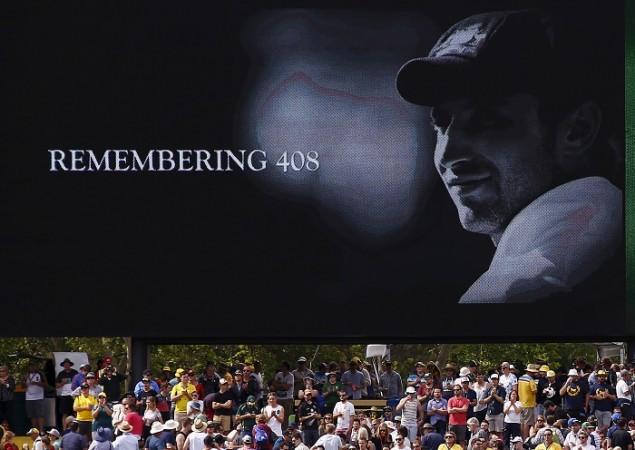
It has been almost one-and-a-half years since Australia left-handed batsman Phillip Hughes left a vacuum in the world of cricket, succumbing to a head injury after battling for life for two days in hospital.
Cricket Australia revealed an independent review report of Phillip Hughes' death and also announced some sweeping changes. One among them is all batsmen, whether batting in the nets or during the match, are now required to wear helmets that meet the British standard.
The helmet Hughes was wearing when struck by a bouncer from Sean Abbott during the Sheffield Shield match at the Sydney Cricket Ground in November 2014 was compliant with the Australian standard. Players are usually not allowed to wear such helmets.
The report also suggested that the injury was so severe that a safer helmet would not have saved Hughes. The delay in the ambulance had nothing to do with Hughes' death as the injury was serious enough to push him into coma.
"The helmet was compliant with an Australian standard, which has since been withdrawn, but was not compliant with the more recent British standard. In any event ... I do not believe the new helmet would have afforded additional protection against the blow given the location of where Phillip was struck, as the protection to the neck, at the rear, is no different," the report revealed by barrister David Curtain stated, according to Reuters.
"Although there was apparently a delay in the ambulance arriving, Phillip was being cared for appropriately in the interim. I am of the opinion the attention received by Phillip after being struck had no role whatsoever on his subsequent demise, due to the nature and severity of his injury."
The report has also revealed that the neck guards behind the helmets cannot provide 100 percent assurance to the players if they are struck by a ball, and that the helmets require further evaluation.
"The global cricket community was deeply saddened by the tragic death of Phillip Hughes and the great loss his family suffered," Cricket Australia CEO James Sutherland was quoted as saying by the Syndey Morning Herald.
"We received Curtain's review last season and since that time we have been considering his recommendations and discussing with relevant bodies as to how we best make changes necessary to prevent an accident of this nature happening again," he added.
"While there will always be a small risk we believe that the measures we have already taken and will enact following this review will reduce that risk even further."
Following the independent review of Hughes' death, Cricket Australia is also seeking permission from the International Cricket Council (ICC) to use "concussion substitutes" (substitutes for injured players) in domestic matches. A reply from the ICC is awaited.
"We're also seeking approval from the Cricket Australia playing conditions advisory committee to allow concussion substitutes in all domestic male and female competitions under our auspices," Sutherland told the Guardian.
"It is one of the fundamentals of the game of cricket that it's a game of 11 players and a substitute has not been allowed in the past and we need to work through all of the machinations of that possibility."
















